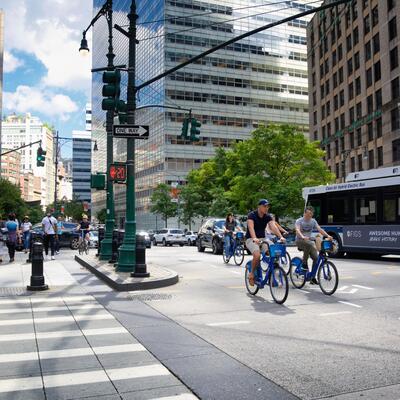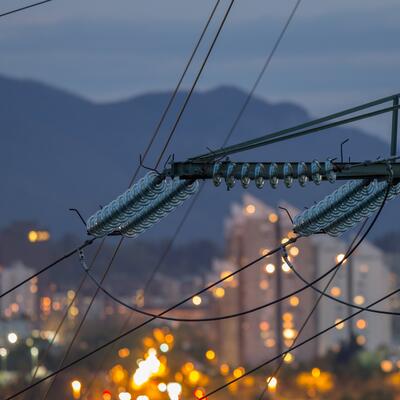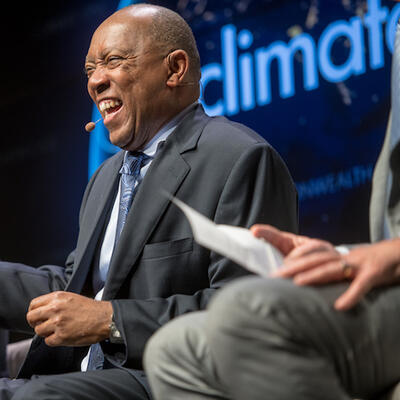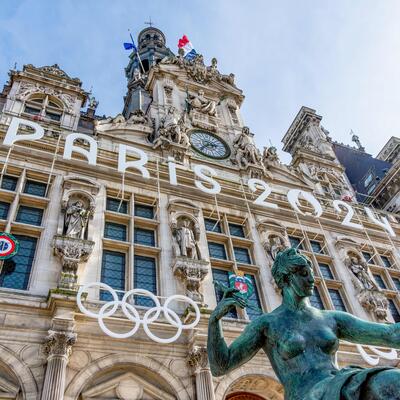
Going for Green at the Paris Games
Guests
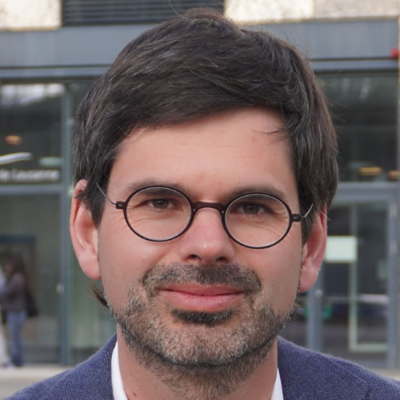
Martin Müller
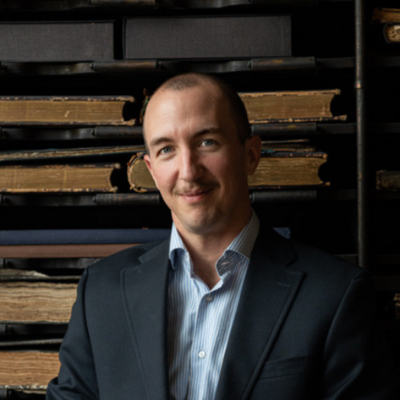
Henry Grabar
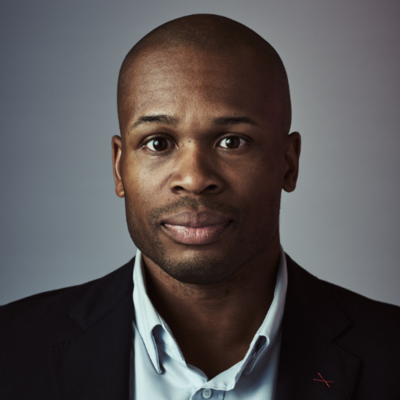
Oluseyi Smith

Angel Hsu
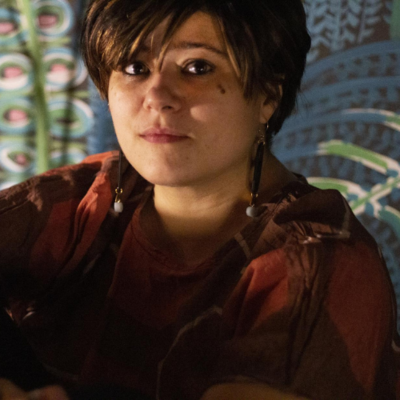
Alana Casanova-Burgess
Summary
The Summer Olympic Games are here! That means more than 300 events, ten thousand athletes and millions of spectators coming to watch. And the athletes are not the only ones with an Olympian task. The organizers of the Paris Games pledged to make their event emit only half of the carbon pollution of the 2012 London Games.
“As an independent researcher my job is not to make people happy, but to tell them some things that are uncomfortable sometimes,” says Martin Müller, Professor of Geography and Sustainability at the University of Lausanne in Switzerland. The uncomfortable people in question are the members of the International Olympic Committee, whose offices are ten minutes down the road from Müller’s office.
“The Summer Olympics will be anywhere between 1.5 and 4.5 million tons of CO2 equivalent. That's roughly the equivalent of a relatively large city, such as Madrid.for a year,” says Müller. The largest share of those emissions come from spectators flying in. Paris’ central location at a hub of European rail networks may make it easier this year for the crowds to avoid flying. Another factor working in Paris’ favor is the fact that they have been building out mass transit for decades. The region is in the process of building 68 new subway stations in the city and the suburbs. Most won’t be open in time for the Olympics, but a new extension from Orly Airport into the city opened in June.
The second biggest source of emissions typically comes from construction. In the past, the Olympics have been synonymous with huge infrastructure projects and iconic structures like Beijing’s Birds’ Nest Stadium. For the Paris Games, the organizers decided to take a different approach. They renovated a number of existing venues and installed a lot of temporary structures that can be used elsewhere in the future. Author and journalist Henry Grabar says, “That might not sound like rocket science, but it previously has been an approach that the International Olympic Committee has not smiled upon.”
The big project, the Olympic Village, was built with a passive cooling system rather than traditional air conditioning, which consumes much more energy. The passive cooling system will probably be just fine for the local residents who will move into the apartments after the Olympics are gone; most Paris apartments have no cooling system at all. But no one really knows how the new system will perform in a heat wave. That has many teams worried, to the point where they have brought in their own air conditioning units. Henry Grabar says he hears athletes saying, “This is the biggest moment of my life, and so I need the room to be the exact temperature that I want it to be so I can get the perfect night's sleep before I have to go out there and literally be the best in the world at the thing I'm trying to do.”
Martin Müller suggests that it would be better if the Olympics had no audience — or at least, a much smaller, local one — in order to prevent most of the carbon pollution that comes from travel. But for athletes, the roar of the crowd can improve their performance.
“Athletes will not perform at the same level in an empty stadium as they would in a completely full Olympic stadium,” says Oluseyi Smith, a two-time Olympian. “But if it's a necessary trade off to ensure that the sport survives for the next 50, 60 years, I would say I'd like to think most athletes would be okay with that.” Smith is now a renewable energy engineer and Founder of Racing to Zero, a consulting group that focuses on environmental sustainability in sports.
In Beijing, the changes made for the 2008 Olympics had surprising environmental benefits that continue to this day.
“Prior to 2008, the air quality situation was pretty dire. Most days had exceeded what the Beijing government had identified as being a blue sky day,” says Angel Hsu, founder and director of the Data-Driven EnviroLab and teacher of public policy and the environment at the University of North Carolina-Chapel Hill. In preparation for the 2008 games Beijing expanded their mass transit, enacted rules that limited how many cars were allowed on the road, tackled heavy industry by shutting down a number of polluting factories, and tried to increase the use of renewable energy. At first, most of those initiatives were meant to be temporary. But once the people got a taste of clean air, the government made them permanent. Hsu says, “I was just in Beijing this past January and I mean, the skies are blue.”
Episode Highlights
2:07 - Martin Müller on the carbon pollution of major sporting events
4:11 - Martin Müller on what Paris is doing to limit emissions on construction
10:18 - Martin Müller on the Olympic games as a media product
18:17 - Henry Grabar on how Paris reduced car use in the city
24:49 - Henry Grabar on cooling innovations at the Paris games
32:32 - Henry Grabar on what the world could learn from Paris
36:32 - Oluseyi Smith on how much he thought about climate as an athlete
39:35 - Oluseyi Smith on what a spectatorless olympics would be like
43:36 - Oluseyi Smith on how he integrates sports and sustainability
47:50 - Angel Hsu on Beijing air quality before the 2008 Olympics
49:18 - Angel Hsu on how the Chinese government addressed air quality issues
52:18 - Angel Hsu on her experience before and after the 2008 Olympic games
Resources From This Episode (5)
Full Transcript
Note: Transcripts are generated using a combination of automated software and human transcribers and may contain errors. Please check the actual audio before quoting it.
Ariana Brocious: I’m Ariana Brocious.
Austin Colón: I’m Austin Colon, And this is Climate One.
[music change]
Austin Colón: The Summer Olympics are here! More than 300 events… ten thousand athletes… and millions of spectators coming to watch. And I’m excited, even though they’ve once again rejected my request to include audio editing as an Olympic sport.
Ariana Brocious: (laughs) Well, there’s always next time… This year, the Olympics are in Paris – which was, of course, also the site of the landmark Paris Agreement. That happened back in 2015, when the world came together to take ambitious steps to try to avoid the most damaging effects of climate change. And that resulted in this commitment to limit overall global warming to 2 degrees celsius with a more ambitious goal of 1.5 degrees celsius above pre-industrial levels.
Austin Colón: Right, so it shouldn’t be a surprise that the organizers of the Paris Games are well aware of its climate impacts. Perhaps in the spirit of competition, they declared months ago that their Olympics would only produce half the carbon emissions of the 2012 London Games.
Ariana Brocious: An impressive goal. For starters, they’ve taken a bunch of steps that are easy to see and brag about: Like in the new Aquatics Centre, the 5,000 seats are made out of recycled bottle caps. And while it’s easy to scoff at that as being pretty insignificant in the big picture, visible actions like these are meant to inspire others the world over. AND Paris has also done a lot more… by doing less.
Austin Colón: Right. Usually, when a city gets awarded an Olympics, they embark on massive building projects – I’m thinking of the iconic Birds’ Nest Stadium in Beijing. But since construction is such a big climate polluter, Paris has opted to build less. Instead, they’ve renovated a number of existing venues and installed a lot of temporary structures that can be used elsewhere in the future.
Ariana Brocious: Still… Any big event that brings in millions of people has to have a pretty significant footprint. To get a better sense of what Paris is and isn’t doing to meet this challenge, our colleague Alana Casanova-Burgess spoke with someone who studies the climate impact of major sporting events….
Martin Müller: My name is Martin Muller, and I'm a professor of geography and sustainability at the University of Lausanne in Switzerland. And that also means that I'm just 10 minutes down the road from the International Olympic Committee, which is the governing body of Olympic games.
Alana Casanova-Burgess: do they like you when you run into them at the supermarket? Are you popular among the Olympic committee folks?
Martin Müller: Look, we know and respect each other. But there's also some Swiss, um, discretion there. Um, they are not particularly happy about the outcomes of my research. But as an independent researcher my job is not to make people happy, but to tell them some things that are uncomfortable sometimes.
Alana Casanova-Burgess: Well, so let's start there. Can, can you put the impact of the Olympic Games on climate on a kind of scale? What is it the equivalent of?
Martin Müller: So the Summer Olympics will be anywhere between 1.5 and 4.5 million tons of CO2 equivalent. That's roughly the equivalent of a relatively large city, such as Madrid, for example. Um, in terms of U. S. cities, um, I know it's still a major city. It's not one of the biggest.
Alana Casanova-Burgess: Well, we, we know Madrid. I think we can wrap our head around Madrid (laughs)
Martin Müller: Okay. Fair, fair, fair, fair enough. So yeah, no, the, you could think if you want to think in terms of equivalences, yeah, you could either run an Olympics today or run a city the size of Madrid on the same emissions
Alana Casanova-Burgess: For a year.
Martin Müller: for a year. Exactly.
Alana Casanova-Burgess: Um. So, what are the main drivers of those emissions, of that climate pollution? What adds up to Madrid for a year?
Martin Müller: So the largest share really comes from travels by visitors. The second largest usually is, construction, a new construction of venues, buildings. And the third then is operations, everything that's needed to actually run the games and put on the show.
Alana Casanova-Burgess: Can we start with construction then? I saw that the organizers of the Paris Olympics have declared that the 2024 games will have less than half the emissions of the 2012 London Olympics. So how did Paris do on reducing emissions just from construction?
Martin Müller: So the interesting thing, first of all, is to say that the claims of the Paris organizers vary depending on when you ask them. And so they've been going back and forth. on what their reference actually is. For a while, they said half of the London, London games emissions. Now they're saying half of London and Rio combined, so Rio was the 2016 games, which is not a minor detail because Rio's emissions were much higher than London's. So all of a sudden you give yourself much more wiggle room if you include the Rio side in the benchmark. So maybe that's the first thing to say really is there has been quite some ambiguity and quite some backtracking also on the part of the organizers in Paris. But they do have lower emissions on constructions than previous games. And this is mainly because they have scaled down the construction program, uh, compared to previous games. So the major new, um, buildings that they have is the Olympic Village, um, for one thing, and then the Aquatic Center. And all other buildings have been pre existing, they may have been remodeled, right? But there has, hasn't been a major construction program going on for these
Alana Casanova-Burgess: Right, so they're retrofitting instead of new construction.
Martin Müller: Exactly.
Alana Casanova-Burgess: I also saw that in an effort to reduce the climate impact of the Olympic Village, which you just told us is new, this is where the athletes stay. The organizers didn't build in air conditioning when they when they built it. So that means that some countries were shipping in their own portable air conditioning units. So was that, is that an example of good intentions gone awry? Making it even worse in terms of climate impacts?
Martin Müller: Yeah, perhaps. Right. So I think the debate around this air conditioning is a complicated one because the one thing it's true that Paris in general is very susceptible to heat waves among European cities for different geographical reasons. The risk of heat waves has been increasing with climate change. And so, um, athletes and national teams are hedging their bets. And it's clear that, you know, if you need to compete under Extremely hot conditions outside. You want your, um, accommodation in the big village, at least to have a reasonable temperature. Right. So I can, I can understand those actions. It's not that, um, the Olympic village wouldn't have any air conditioning. Uh, it has passive air conditioning, it works through pumping waterdown to the ground, it kind of takes up the ambient temperature of the ground, which is cooler than the air temperature and kind of bring that water pack up and then you have the heat exchanger and you kind of blow cooler air into the building. Um, that's not as effective and it has its limits as well, especially in conditions of high heat. And so perhaps the second thing to say around air conditioning is that it's not very common in France to have air conditioning and certainly not at the latitude of Paris, right? So the vast majority of apartments won't have any air conditioning. So it's such as it's nothing, um, abnormal. Um, I think that's something that most people are used to and even just only having this passive cooling is actually quite a difference to most residential buildings.
Alana Casanova-Burgess: And that means that these, these athletes or their, their teams, their managers, felt that's not enough. We need to import our own units.
Martin Müller: I think that's it, right? It's a mixture of a, this building is going to, um, going to live its first summer. So you don't know how the system holds up against potentially extreme conditions. The national teams are not familiar necessarily with this way of air conditioning, and they want to be able to control the kind of conditions in which their athletes are. And one has to recognize that in different countries around the world, there was a very different expectations of what is an acceptable inside temperature. You know, some countries will expect, um, around 70 degrees and others will be happy with 80 or even more. And I think then it's quite natural reaction to bring in this portable air conditioning units.
Alana Casanova-Burgess: Especially these are athletes who are competing in some of the highest stakes competitions in their careers. They want to I guess, uh, they don't, they don't want to be sweating while they sleep.
Martin Müller: exactly right. They were, they want to recover actually from from the competitions because they potentially will be doing a several in a row. Um, and in the larger scheme of things, I mean, that debate is a tempest in a teapot because, of course those air conditioning units will consume additional electricity, but it's a drop in the bucket compared to the general electricity consumptions of running the Olympics. Uh, the major issue here is. at the level of the narrative that the Olympic Games want to spin, because the Olympic Village is one of their flagship sustainability projects.they say it's been built with mostly wood, at much lower carbon emissions, than with a normal, what they call a reference building in France. And so the fear is that, this message that they want to send. with this building is going to be overwritten actually by the controversy around the air conditioning units. And it kind of ruins their story. And because the Olympics run so much on producing stories, producing images, this is the actual danger to, to the narrative.
Alana Casanova-Burgess: Right. I mean, I think most people probably think of the Olympics as this international, friendly competition without thinking about the fact that it really is a business. It's a business and the main source of revenue is selling TV rights. So, so I've seen news stories about cleaning up the Seine. Which is the main river that runs through Paris. Um, I've seen stories on green construction. There's also the issue of sustainably sourced food, um, because that's visual. How much of the Olympic Committee's green actions have been tailored to that TV market and that narrative?
Martin Müller: Most of the actions, right? So the Olympics need to produce pictures and sell pictures in particular. Right. And so they, I'm very much worried about what those pictures look like. And so they do what some colleagues of mine have called spectacular sustainability. So sustainability that goes down well, that people will
Alana Casanova-Burgess: Spectacular meaning spectacle.
Martin Müller: Exactly. Meaning spectacle, right? the Olympics is such a spectacle, a spectacle of sports competitions. And so any kind of. Actions that are on the climate need to fit that, that frame really. So that sometimes makes them do things that are very visible and very spectacular, but not very effective actually in bringing down the, the carbon footprint. The bet there is, um, that maybe because of the visibility of Olympic games and the hundreds of millions of people who watch the TV coverage, um, this will actually create some, um, Some awareness with people and perhaps push people to say, okay, Hey, if they do that for the Olympics, I can do that for my house or my car. And I'm going to switch, um, to an alternative source of energy.
Alana Casanova-Burgess: Mm hmm. Do you buy that?
Martin Müller: Uh, look, there have been very few studies on how much that signaling actually makes a difference in the area of climate change and the Olympics. There have been studies on sports because there is a similar bet out with sports that, you know, the Olympics will encourage broader participation in sports by people and make people live a healthier lifestyle and so on. And the results are actually very mixed. Um, some of the results actually show that if you watch, um, TV and the Olympic runner, it will discourage you from taking up running because, you know, you, you go like, I'm never going to be able to do what that person is doing.
Alana Casanova-Burgess: Right. It's, it's aspirational, but, but not really, right? Like, I'm not going to see Jasmine Camacho Quinn and think, now I need to take up hurdling.
Martin Müller: Exactly right. Right. And the other thing is, you know, people don't watch the Olympics to learn more about how to change the lifestyle, right. They want to be entertained. Um, and so they're not extremely open really to messaging that isn't really about the sports.
Alana Casanova-Burgess: so, I guess the last one for us to talk about is travel, because that's the biggest source of carbon emissions by far for the Olympics. How does that break down between, call it, essential travel of the athletes getting to the games and spectator travel?
Martin Müller: So one thing to know about the Olympics is that there are about 11,000 athletes, give or take, right, that actually run the show. And you need then accredited, people that actually help, like the media, like the coaches, the trainers, security personnel, and so on. These are another 400,000 roughly. And then compared to this, the number of visitors, which depending on the source is anywhere between 12, 13, 14 million. So you've got relationships where the actual number of people needed to put on the show is actually relatively small compared to the number of people come and watch the show. Um, And so this is the interesting thing then about carbon emissions that I know the carbon emissions from the athletes or even from the national teams are a tiny blip on the screen compared to those of the visitors that come in and watch the Olympic Games.
Alana Casanova-Burgess: Right, because there just aren't that many of them.
Martin Müller: Exactly.
Alana Casanova-Burgess: Do you think that spectators should just stay home?
Martin Müller: I think the Olympic committee should actually look at where spectators come from and see the leverage they have actually on changing the geographical distribution of, of the origin of spectators. There are some spectators that make more of a difference than others. And those are mostly those that come from far away and take the plane. Right. So one way of looking at this would be that in any case, 99.9 percent of people are watching the Olympics on the screen, it's a. is a small minority actually that get to go to see the Olympic games live. Um, and I think we should think about alternative forms of recreating the same experience without actually being in the stadium. Um, and one way in which this works very well is the fan zones that many cities have been putting up actually around the world. where you can go and watch a game or a competition in a zone that resembles very much a stadium. Actually, you have a big screen, you've got the ranks, you've got food, you've got a great atmosphere, even closer actually to, to, to the action than you would be in a stadium.
Alana Casanova-Burgess: So looking beyond the event of the Olympics itself, what are the longer term positive or negative climate impacts that it might have on Paris specifically, on the city's infrastructure, on the future emissions?
Martin Müller: Well, so there's a little bit of speculation going on there, right? What, what are the long term impacts? Um, it, it doesn't put the city on a new path towards, um, A lower, a low carbon transition, right? So that would have been one of the chances of saying, okay, we use such a big event to really change policies around the low carbon transition to really make the leverage work towards more structural change that goes. Beyond the event itself. Um, that has not really happened. So there is more of an issue that, you know, whatever we see happening around the Olympics is a, is a one-off that won't necessarily last. Now there are other great initiatives in and around Paris that, that are going on. Um, so it's not that nothing is happening. Um, but I would have liked to see a kind of more longer term engagement, uh, and how the Olympics really are a step change in climate policies for Paris.
Alana Casanova-Burgess: Well, assuming we're not going to get rid of the Olympics, how might you design a better version of them from a climate perspective?
Martin Müller: So one of the interesting things about the Olympic Games really is that. They don't need to significantly change the business model in order to become a much, um, better or lower carbon emitting event. That's because at the moment, they're kind of a mixture between, um, uh, a media event or media enterprise and a tourism enterprise. The media enterprise produces the pictures and sells them and the tourism enterprise produces them. brings all the visitors in and makes this big party. So the media enterprise is actually relatively low carbon. So if you take a metric like carbon intensity, which is, um, millions of dollars of revenue per carbon emissions, media enterprises are actually relatively low carbon. The tourism component of all of this is high carbon component, but at the same time, the tourism component isn't actually the main contributive revenue. My spectator, revenues from ticket sales are only the third largest revenue source. If you had spectators coming more from the region, you could significantly reduce the carbon footprint, without actually much reducing your revenues. So, the revenue model doesn't really need to be transformed in order to really wind down the carbon emissions. So that's the good news there. I think the bad news is that historically the Olympic games have been slow to change. they usually only change when there's pressure on them. There's very little proactive change. So I think one needs to keep the pressure up for this change to actually happen.
Alana Casanova-Burgess: Martin, thank you so much.
Martin Müller: Thank you, Alana.
Austin Colón: Coming up, even before Paris was awarded this year’s games, the city had a strong focus on sustainability..
Henry Grabar: There's been a massive investment in mass transit, right? They are in the process here in Paris and in the suburbs of building 68 new subway stations. It is kind of astonishing what they're accomplishing right now.
Austin Colón: What climate lessons can the world learn from Paris? That’s up next, when Climate One continues. We’ll be right back.
Ariana Brocious: Please help us get people talking more about climate by sharing this episode with a friend. And we’d love to know what you think of the show. Please give us a rating or review. You can do it right now on your device – and it really helps people find the show. Thanks!
Ariana Brocious This is Climate One. I’m Ariana Brocious.
The Olympics are one the biggest sports spectacles in the world. And to accommodate the crowds, the cities that host them usually undertake massive building projects: They build giant venues designed to leave a lasting impression — like the stadiums in Montreal, Sydney, London, and of course, Beijing. They also build a ton of smaller venues that may go underused after the circus has left town. All that construction has a huge carbon cost. So for this year’s Olympics, Paris has taken a different approach.
Henry Grabar is a journalist and author of “Paved Paradise, How Parking Explains the World.” He’s also spent years studying how Paris has reduced car use in the city.
Henry Grabar: They've really focused on doing things in temporary or existing venues. Um, and that might not sound like rocket science, but it previously has been an approach that the International Olympic Committee has not smiled upon. I think because they, for a long time, wanted to see, uh, cities embarking on these big flagship projects. Think of, um, you know, the Bird's Nest Stadium in Beijing or something like that. Right? You know, these iconic projects, that make sure that the Olympics aren't just a television spectacle, but actually leave a physical mark on the cities in which they take place. Um, I think that was the approach they favored for a long time. But after Athens and Beijing, there was this realization that Olympics were not only leaving cities with a bunch of structures that didn't end up being used, but also they were just costing an enormous amount of money. And I think with the attention to the climate now, as well as perhaps a greater sense of limited resources in the cities that wish to host these events, Um, there is a move towards, uh, maybe less is more, uh, and that's what Paris is trying to do here.
Ariana Brocious: in Paris, perhaps the biggest new construction is the Olympic Village, built in the northeastern suburbs of the city. Why was that area in particular selected to locate that there, as well as the Aquatics Center?
Henry Grabar: Yeah. So that's another interesting element of their approach to the extent that they are building new things, and you're right to put a spotlight on the Olympic village because this is a big, big project, they're doing these new things in, the northern suburbs of Paris in a department of the country called Seine Saint-Denis. And Seine Saint-Denis is the poorest department in France. So, it's a place where, um, unemployment rate is high. Obviously the poverty rate is high. And there's also a large concentration of immigrants and children of immigrants. And so the sense is that by investing in this place with this Olympic infrastructure, the games become a way to, hopefully foster investment in the long term in this part of the region that has traditionally been neglected. And the Olympic Village is part of that. after the games are over, that housing where the athletes are now, a lot of it is going to become social housing. And, um, The other part of it is that in addition to these Olympic investments, the city has been focused on building out the transit network in these same suburbs. And, I think there's actually two transit extensions that have just opened in this department we're talking about right in time for the Olympics.
Ariana Brocious: Yeah, I want to talk about that a bit more, um, in a minute because I think that's really interesting. One more detail about this location of the Aquatic Center, is it true that a lot of kids in that area maybe don't know how to swim and this would be an opportunity to sort of provide a resource for them that they might not otherwise have?
Henry Grabar: Yeah, that's right. According to, um, the, the French statistics at one in two sixth graders in this department sense and he, um, doesn't know how to swim. So that's fully half of, you know, middle schoolers who don't know how to swim. And so the thought is with this aquatic center that the olympics are not just a chance to invest in the infrastructure, but there's also a commitment here to provide lessons going forward. And so this is not just going to be something that sits empty for years to come, but this is going to be a place where hopefully, um, that 50 percent of middle schoolers who don't currently know how to swim will have a beautiful, um, prime facility and that facility will be staffed by people who are teaching swimming lessons.
Ariana Brocious: Hmm, yeah, that's great. So let's pivot now and talk a little bit about the weather or the climate or both. Elsewhere in this episode, we talk with Martin Mueller about the fact that the Olympic village was built with a passive cooling system rather than traditional air conditioning. And, you know, some of the teams, including the U S are worried enough about this, that they're bringing their own air conditioning units, which is quite a, a thing to consider. What's your take on this approach, this passive cooling system?
Henry Grabar: Well, I have not yet been to the Olympic Village, so I cannot say for sure what the temperature is like in these rooms. What I will say is that Paris has long had, um, pretty temperate summers with pretty far north. Right? We're at the latitude of like a, um, you know, north of Boston, right? Um, and so, uh, this is a place where it's actually pretty unusual for the temperature to hit 90 degrees all summer long. That said, there have been several devastating heat waves that have occurred over the last 20 years. And, they don't, as far as I know, have a plan for what should happen to the Olympics should we have three days in a row of 95 degree weather. So let's just hope that that doesn't happen.
Ariana Brocious: Yeah, and you yourself have spent some summers in Paris, uh, in apartments without air conditioning because that's sort of the case. Most don't have it. Um, tell us a bit about what that was like. Was it, was it bearable?
Henry Grabar: It was challenging. Um, you know, I think, uh, generally speaking in Europe, because energy costs are higher here than they are in the United States, there is more attention paid to the ways that the building can cool itself architecturally, even before. Mechanical ventilation comes into play. And that's true even in places where air conditioning is standard, like southern Spain or southern Italy. If you were to go to one of those places, you would find that new construction always has air conditioning, but it also has apartments that are cross ventilated, right? So that the wind can blow all the way through the apartment at the coolest hours of the day. And blow out that hot air and the windows have metal roll down shutters on the outside. So even if you're at home during the hottest part of the day, you can close those shutters and keep the sun, uh, from hitting your windows and entering the room. And that's much more effective at cooling the apartment than, uh, simply drawing the shades indoors. Um, so that kind of innovation is not very common. In Paris, because the city has traditionally not had that kind of weather, but on new construction, you are seeing more and more devices of that kind. And, uh, and certainly a focus on cross ventilating apartments, which again, we don't have in the United States because we have these building codes that require double loaded corridors in the middle of the building. So it's very hard to get apartments that have, um, windows on both the north and south or east and west sides.
Ariana Brocious: Just jumping back quickly to the air conditioning in the Olympic Village. We know traditional air conditioning is very energy consumptive. It also has this, um, very negative side effect of heating the outside air, um, and being noisy, which is something that here in America we don't concern ourselves with too much. When we spoke before you said Parisians and others who live in tight urban spaces are less accommodating of those things.How hopeful are you that this passive cooling system at the Olympic village will serve as a model for other kinds of innovations around cooling?
Henry Grabar: I think we'll have to see how it performs. I mean obviously, Olympic athletes are not regular people in some sense. And what I've heard from the team bringing their own ACs is people will say things like, well, you know, sure, Sometimes at home I don't mind sleeping with the windows open and the fan on when it's a little warm outside, um, but this is the biggest moment of my life, and so I need the room to be the exact temperature that I want it to be so I can get the perfect night's sleep before I have to go out there and literally be the best in the world at the thing I'm trying to do. Um, and it's, it's hard not to feel sympathy for that, that sentiment, um, I think broadly speaking, the way that the organizers are envisioning the future of climate control and buildings is a world in which we do have mechanical solutions at our disposal. Like the piped cooling system that exists in the village, but we are also willing to compromise a little bit and adjust the way we dress or the way we behave, to accommodate the temperature that exists outside. So maybe instead of insisting that every room be exactly 70 degrees all summer, we're willing to, um, you know, put up with a little bit of variation in that, and I'm sure that'll be fine for the inhabitants, um, of these buildings, uh, in the years to come, um, accepting perhaps a couple days of, of really bad heat waves, at the same time, um, it's obvious that some Olympic athletes would rather a, uh, a more finely tuned system of temperature control.
Ariana Brocious: Sure. Yeah. As you say, they're competing at the highest, highest point, uh, in the world. So there's, there's a lot at stake. Uh, another way that Paris serves as a model city is in its transportation policy. In an article for Slate last year called how Paris kicked out the cars, you wrote that car trips within Paris declined by nearly 60 percent between 2001 and 2018. How did that happen?
Henry Grabar: Well, there's a few different things happening at once. The first is there's been a massive investment in mass transit, right? they are in the process here in Paris and in the suburbs of building 68 new subway stations, which from our perspective, I mean, I'm a New Yorker, I live in Boston now, San Francisco, L.A., Seattle, you name it, like, no big American city could, uh, embark on a project even, uh, a third of that size. Um, so it, it is kind of astonishing what they're, um, uh, accomplishing right now. And the results of that are beginning to take shape in the sense that you are seeing people, um, using that system, right? More and more people riding buses, riding trains, um, and, uh, car ownership is in fact declining, um, in the city and in some of the suburbs as well. So that's probably the first thing that's happened. Secondarily, the city has made it more challenging to use an automobile in the core of the town, and that means that lanes on the streets have been converted into bus lanes and bike lanes. The price of parking has become prohibitively expensive on the street for visitors coming from out of town. and lots of street space and parking space has been converted into public space as well. Like they have, um, streets with, uh, trees and playgrounds, uh, outside of schools where there once were rows of parked cars. So, these kinds of changes, there is a kind of push and a pull, right? Um, the, the carrot is, uh, better mass transit, nicer bike lanes, um, et cetera. And, and, uh, and the stick is, and also it's going to become more expensive and more difficult to use your car. And we have seen Parisians respond to those circumstances with lower rates of car ownership and more and more people using mass transit and riding bikes.
Ariana Brocious: Yeah, and I wonder what comparison or lesson could you draw from Paris's experience compared with that of Manhattan, which was going to implement congestion pricing and then abruptly sort of pulled back.
Henry Grabar: Yeah, there is a political structure here that's important to understand. The city of Paris occupies only about one fifth of the entire metro area in terms of population. And what that means is that the mayor of Paris, um, while she is an international spokesman for the entire metro area, Um, actually only controls, um, a relatively small slice of the core and also only responds to the voters who live in that core. And so that mayor, Anne Hidalgo, and also previous mayors, they have been able to enact these, this sort of suite of pro bike, anti car policies without too much objection from the people who are their constituents because those people tend to live really close to the heart of the city and are less likely to be reliant on cars. Now, don't get me wrong, there are plenty of Parisians who drive. And owned cars who have also, um, gone along with this trend. But I think what separates Paris from a lot of American cities is precisely the fact that the mayor only responds to this urban core as a constituency, right? So she doesn't have to go out into these far off suburbs and talk to people who drive to work every day, um, in order to gain reelection. And I think her policies in the center of the city reflect that and to some extent there has been a kind of city suburb um, divide over these policies with the president of the region saying at one point that the mayor's decision to close a central highway and turn it into a park was unfair. And in fact, there was a lawsuit over that precise issue because suburbanite said, Hey, um, just because you're in charge of Paris doesn't mean you can take away this highway that many of us use to get to work. But in the end, the city won that battle.
Ariana Brocious: So that'd be like, as if the New York mayor was the mayor of Manhattan rather than the entire, all five boroughs or whatever.
Henry Grabar: Exactly. Exactly. And Manhattan, as we know, has the lowest rate of car ownership of any place in the United States. And if there were such a thing as the mayor of Manhattan, um, that mayor probably would be much more likely to establish bike lanes, congestion pricing, and so on. Um, then our real life New York city mayors who also respond to voters in Staten Island.
Ariana Brocious: Earlier you mentioned that, um, Paris is also working to build out its mass transit system in some of these outlying suburbs, particularly ones that maybe are less affluent than the city center. Um, how is that connected with the plan for hosting the Olympics? And will that benefit anybody who's coming in as a tourist or, you know, the Olympic teams coming in to, um, to be in the city for a few weeks?
Henry Grabar: Well, the first, the last part is the easiest one answer. It's definitely going to benefit everybody who comes to the city. A very obvious example of that is that one of the subway lines now extends to the secondary airport Orly, which has traditionally had a very poor mass transit connection to the city. And now, apparently, I haven't done it yet, but apparently you can just, um, get on the metro there and be in town in, in 15 or 20 minutes, which is a remarkable change and, and one that I'm sure many Olympic visitors will be making use of. Um, this is part of a very large mass transit expansion that's been planned for 20 years or so, and the goal of that expansion is really to knit together what has historically been a pretty fragmented metro area with a strong divide between a wealthy core city and some very poor suburbs on the outside. And that has been, um, uh, an important social issue in France has been demonstrated by repeated rounds of rioting in these suburbs, um, places with super high unemployment, very, very difficult to get to without a car. And so the people who live there, they're sort of stuck in these enclaves. And so the, the goal of this transit expansion is to knit all these places together and make it possible for these people to have access to the jobs and amenities that the city provides. Now, when the Olympic committee was thinking about how to, um, plan for a games in Paris, they saw this as an opportunity, you know, we can, um, take advantage of some of this, um, unused industrial land to, um, build an Olympic village. At the same time, we can take advantage of this transit expansion that's taking place and we can deliver, um, hopefully some, uh, investment and equity benefits to the people who live in these neighborhoods. Of course, some version of that is often the promise of the Olympics. the difficult thing is, do those promises get held up after the games are over? Right? When, when, when all the media leaves town, does the Olympic pool still offer swimming lessons to local kids two years later?
Ariana Brocious: Right. Yeah. So I'd love to imagine that the 16 million people coming to Paris for the games get to experience this wonderful, comprehensive public transit system and come away with a really positive view of mass transit, particularly Americans who, um, you know, could, we could really stand to build out our mass transit much better in this country, but it's concerning that that many people, um, might overwhelm the system. There's probably going to be some trade off of the local population leaving in the summer months, but what's your take? Do you think it's going to be kind of like a really unappealing experience or a good experience for someone who's not used to it?
Henry Grabar: I think there may be moments where you have to wait to get on a train, um, but generally speaking, I think if you, if you come from a typical American city, you will probably be pretty pleased with the frequency of the transit service here, right? Because in, in, in Paris, you know, nobody runs for a train, right? You know, because the Metro comes every two or three minutes. So it's, it's just, it's just a funny mindset switch, right? Like you hear the train coming, you think, should I run for that? But nobody does it because you know, there's going to be another one right behind it. Um, so I think in general Americans will be pretty pleased, but you know, you might end up playing this clip back to me in a couple of weeks and saying, you know, worse, worse, worse podcast predictions of the year.
Ariana Brocious: It's hard. It's hard. So, the central question of this episode is what can the world learn from Paris? So, what should the world learn from Paris?
Henry Grabar: I think there's three things that I would take away from this. And number one is that, um, you can do a lot with temporary structures that are designed to serve a momentary need and then are able to go away. Right? I think in America, a lot of the times when we when we think about urbanism, we think about city planning. We think about building. We have this idea that everything has to be permanent and because things are going to be permanent, they require a long process of community input to make sure that we get everything exactly right. Um, and a very kind of, uh, heavy touch building process that requires, um, complicated and, uh, you know, well, permanent materials like lots of concrete, right? And what you see when you walk around Paris right now is an enormous amount of temporary structures that are just here for the Olympic Games. They've transformed these public spaces and then they're going to go away and they're going to be reused and they're going to become part of some construction site somewhere else. And so I think that's, that's a valuable lesson we could take away. Um, the second one again is, Paris has moved really fast to make a lot of the changes that we have talked about that make it possible for people to get around without cars. During COVID, for example, the mayor just closed one of the big east west streets to private cars and turned about half of it into a gigantic bike lane. And one of the things they've learned is that if you do that stuff quickly, um, then it's much easier to see the results, um, then if you spend years, uh, deliberating over whether you should do something, um, and as a result, they've actually managed to create a pretty comprehensive cycling network. And I think they're seeing the results of that now. Um, and then the third one is, um, I guess on the subject of, uh, air conditioning in particular, that you can do a lot with the design of the buildings before you actually get to the systems of mechanical control. And in America, we have some really rigid building codes for multifamily buildings that presume that all the problems with ventilation and heating are going to be solved with air conditioning, right? And that that not only increases the load on the electrical grid and increases the amount of AC you have to have, but it also just you know, leaves some low hanging fruit in terms of pleasant ways to design buildings. And I think that Europe has gotten quite good at that, at finding ways to ensure that residential structures actually have a natural level of comfort built into them even before you put the AC in the window.
Ariana Brocious: Henry Grabar is a journalist visiting fellow at Harvard and author of “Paved Paradise, How Parking Explains the World.” And we've been chatting, uh, from Paris where you are right now covering the Olympics. So enjoy the, the Parisian summer and thank you so much for joining us on Climate One.
Henry Grabar: Thanks for having me.
Ariana Brocious: This is Climate One. Coming up, having a spectator-free Olympics might be good for emissions, but what would it be like to compete without the roar of the crowd?
Shay Smith: Athletes will not perform at the same level in an empty stadium as they would in a completely full Olympic stadium. But if it's a necessary trade off to ensure that the sport survives for the next 50, 60 years, I would say I'd like to think most athletes would be okay with that.
Ariana Brocious: That’s up next, when Climate One continues. We’ll be right back.
This is Climate One. I’m Ariana Brocious.
If you’re someone with an eye on climate, it’s easy to think of the Olympics in terms of tonnes of CO2 emissions or truck loads of food waste — this giant carbon footprint created by this one event. But for the athletes competing, this is one of the biggest moments of their lives. And the way the games are designed has a huge impact on how the athletes perform.
Shay Smith is a two-time Olympian. He ran the 4 by 100 relay in the 2012 summer games, and competed in bobsleigh at the 2018 winter games. Now, Smith works as a renewable energy engineer. He’s the founder of Racing to Zero, I asked him, back when he was competing in the Olympics, how much did he think about climate change?
Seyi Smith: In London, in 2012, I did not think of it at all, in all honesty. Uh, sustainability wasn't really top of mind compared to what it is now. back then. In 2018, I was thinking about it more, but still not at the level that athletes today think about it. And that was just because, you know, bobsleigh is a winter sport. The changing climate had an impact on the quality of, of, of our ride. If you were in a particularly bad track, the ice was very, very rough and it just was unpleasant. And if winter is not going to be as cold as it should be, uh, it will impact the quality of our race.
Ariana Brocious: if you were competing now, how much do you think it would be on your mind?
Seyi Smith: Definitely a lot more. And that's not just because it's all over the news and there's, there's social media influencers whose, whose thing is sustainability. I think for athletes competing today in 2024, there are smoke events. There's high heat, there's lack of snow and ice for the winter sports. You just really can't get away from it. There's cancellations, you know, events are being canceled because of last minute changes.
Ariana Brocious: Yeah, we've seen in the last several years that climate writ large has really kind of come home for a lot of people, and maybe if you were thinking it was a future thing, um, it's now front and center for lots, lots and lots of people. As someone who served on the International Olympic Committee's Sustainability Commission, how successful do you think the Paris Olympic organizers have been in prioritizing environmental sustainability as a core priority of these games?
Seyi Smith: From the perspective of somebody who is aware of the efforts that they're going to, to make these games greener. Before the games have started, I would say that they have been successful in, in their planning and their decisions and their design. From the perspective of somebody on the outside, I think it would be nice had they done more to market all, all the efforts they're going through, because I think you speak to the average person on the road. They probably don't know that, you Paris is trying to be net, net zero for the games and they don't know all the things that Paris is doing compared to what was done in, we'll say London,
Ariana Brocious: Yeah, that's a good point. Elsewhere in this episode, we're talking with Martin Muller, whose research focuses on climate impacts of the Olympics. And he says things like reducing food waste and water and plastic, which are things that are they're trying to do this year. And even reducing the emissions, let's say from athlete travel are pretty small potatoes. Because when you look at total emissions, the biggest impact by far comes from spectator travel. True of many big events, right? The, the crowds of people coming, and those people may not even have sustainability top of mind, right? They're coming to see the games. So one proposal might be to have a scaled down Olympics, you know, to have less of a carbon impact, fewer spectators. So as an Olympian, if you were to imagine competing without all that spectator travel, what would it be like, uh, for the athletes?
Seyi Smith: Before I answer that question, I just, I just want to add in response to what Martin would hypothetically be saying about this. Yes, he's right. Uh, spectator travel is going to be the biggest source of emissions. Paris, unlike other games, has tried to keep all the venues within a 10 kilometer radius of each other, with the exception of Tahiti,
Ariana Brocious: Tahiti is where the surfing competitions will be. Is that right?
Seyi Smith: That is correct. so, you know, maybe it averages out to be the same to previous games, but spectator travel from event to event hypothetically, it should be less because of how close everything is, um, and it being in Europe, you know, the train system is quite good. If most of the spectators are people coming from continental Europe who don't need to fly in. it could end up being quite good, uh, in terms of the, the emissions that we see from spectators compared to what it would be if they're all flying into somewhere far away, which doesn't have as good of a transportation infrastructure. But to answer your question, an Olympics with no spectators, or considerably less spectators, while being a good idea from a, an emissions perspective, as an athlete who has experienced London 2012, where it seemed like every event was sold out. And I remember walking into Olympic stadium, a hundred thousand people screaming at their lungs, the exact moment I walked in, not because they saw me, but because it was just when I think Mo Farah had won a gold medal in the, in the 10K. You know, with that, with those many people screaming atop your lungs, you stop hearing the sound and it's more of just a vibration in your gut. You know, that experience, I get goosebumps whenever I think about it. It helped my performance. All to say that athletes will not perform at the same level in an empty stadium as they would in a completely full Olympic stadium. But if it's a necessary trade off to ensure that the sport survives for the next 50, 60 years, I would say I'd like to think most athletes would be okay with that. You know, we have to make tough decisions. We've all competed in empty stadiums. You know, we do that most of the time, at least in athletics, when it's not Olympic games, just gotta, you hope the Olympic games is going to be the pinnacle, right? The full crowds. And all the cameras.
Ariana Brocious: Yeah, I like hearing you say it gives you goosebumps. It's like very easy to kind of put my mind there. So you have a master's in engineering and since retiring from sports competition, you've been working in the renewable energy industry. Where along your journey did you find yourself becoming passionate about sustainability and renewable energy?
Seyi Smith: I have always been passionate about the environment and sustainability since I was a kid. I don't know, nine, ten years old, and it came from Star Trek. the next generation, not the original. I, I can't, I can't watch the original. Uh, but you know, the Jean Luc Picard from the nineties and every subsequent Star Trek show just painted this, this utopia where humanity had found, you know, just perfect balance with the environment and we didn't burn traditional fuels to get energy. We just converted energy using some great technology. And it allowed everybody in this awesome TV show to just focus on, in my mind, what was an important thing. You know, how can we, how can we better ourselves? How can we learn about the, about the universe? And when I, when I would watch that, I would say, my God, I want that world. You know, I want, I want a Star Trek style world, which is why I got into engineering, electrical, and then renewable energy, uh, technology. And it's, it's why it stayed with me. And has been with me all my life. I'm just trying to, trying to get on that spaceship.
Ariana Brocious: That's awesome. So today, how do you integrate these two passions, sports and sustainability?
Seyi Smith: Yeah, well, today I have a not for profit, Racing to Zero, that myself and four other Olympians run. And Racing to Zero came, it came out of an idea that I felt, this is four years ago, I felt that sport, Olympic sport, was not doing its fair share to reduce pollution. global carbon emissions, the IOC and Olympic Games. Yes, they have teams of experts and they have all these master plans to kind of reduce their emissions. But your typical track event, swimming event, archery event. It's full of mostly volunteers or coaches. We don't have the resources or capacity to think about that yet. We still have a cumulatively very large impact on carbon emissions. So with the help of the IOC and the Canadian Olympic committee, our team, we created Racing to Zero, which is a consultancy that helps all these national and provincial, which is state, uh, and, and municipal support organizations to just measure their emissions and, and, and sort of execute projects where they can reduce their waste. That's, that's kind of how I try and do my part.and we hope that we'll sort of just keep on going from strength to strength. And we'll get to a point where sport is a, is a guiding light for other sectors to say, Yes, we can continue to do things while not having a negative impact on the environment.
Ariana Brocious: For yourself and the other elite and pro athletes that you interact with, how do you all deal with the reality of climate and what can sometimes either be termed eco anxiety, you know, this concern that we're, um, we're ruining the planet and there's no recourse, or even apathy where you just sort of give up and want to walk away because it feels insurmountable.
Seyi Smith: Well, I'd be lying if I said I didn't have those same feelings that you just described. Especially when you just keep on getting, you know, new stories of icebergs falling off and, and more animals be becoming extinct or endangered rather. But I try and use sport as my, as sort of my analogy. This is the, the fourth quarter, second half. The last 50 meters, whatever sport you want to pick. And I'm hoping for a massive comeback story. We see a lot of sort of small positive stories everywhere. You know, every startup I hear is some new technology startup that's gonna try and save the world. You have not for profits like, like, like my own racing to zero, full of athletes trying to do their bit. My hope is that collectively, all these individuals and sometimes governments trying to make a positive change. My hope is that we'll start seeing dividends from all the work that everybody is doing. And, you know, the best, the best sporting games are the ones where it's, uh, It's that last shot in the last, in the last couple of seconds that makes, makes it that much memorable. So I'm hoping that, you know, in 50 years we'll all be able to celebrate how we had this massive turnaround. And I want to be a part of that, just like I love, you know, celebrating a good win.
Ariana Brocious: Shay Smith is a Renewable Energy Engineer, a two time Olympian, and former member of the IOC Sustainability Commission. Thank you so much for joining us on Climate One.
Seyi Smith: Thank you for having me.
Austin Colón: Hosting the Olympics is a massive undertaking -- and for the cities that do it, the impact can last long after the crowds are gone. The local government may be left with expensive new infrastructure, and huge debt. But sometimes, the games can lead to lasting, positive change. That’s what ended up happening in Beijing, where the skies are now far clearer than they were before the 2008 Games.
Angel Hsu teaches public policy and the environment at the University of North Carolina-Chapel Hill. She is also founder and director of the Data-Driven EnviroLab, where her research focuses on the air quality and climate impacts of cities. She was in Beijing before and after the 2008 Olympics, and experienced how the city changed first hand.
Angel Hsu: Prior to 2008, the air quality situation was pretty dire. Most days had exceeded what the Beijing government had identified as being a blue sky day. That's when the air quality index on a scale from zero to 500 was 100 or less. And even then we're talking about air pollution concentrations that exceeded what the World Health Organization would recommend as safe exposure to particulate matter. To sulfur dioxide, to nitrogen dioxide. These are all air pollutants that are dangerous to human health. I remember going to Beijing and then regularly just seeing gray, cloudy conditions and then, um, just basically not being able to see the sun on a regular basis and then being able to just viscerally smell and experience like kind of a smoky quality to the air in Beijing.
Austin Colón: Wow. I could imagine that being very striking. And I wonder what was the reaction among the athletes to that air quality?
Angel Hsu: Yeah, so a lot of athletes said that they were simply not going to compete in the Beijing 2008 Olympics. They said, especially some of those who have participated in endurance events, we're talking about marathon runners, they essentially said, the air quality, this is too dangerous, my health and my life is going to be put at risk if I participate in the Beijing Olympics. But yeah, I mean, it was, it was pretty, um, it was pretty serious and it was really before the Chinese government had started to implement policies to really tackle air pollution.
Austin Colón: So let's talk about that plan. What did the Chinese government do to address the issue?
Angel Hsu: Yeah. So Beijing really tried to tackle air pollution in three main areas. One is road transport. So they instituted an odd even rule for cars. So that effectively reduced the number of cars on the road by half. So on certain days, only odd numbered license plates could drive on the roads. They also really increased the number of public transport options available. And so when I was living in Beijing. They had around, two and a half subway lines, like the first couple of times that I went to Beijing from 2001 all the way up until 2007 and in just a short amount of time in a few years, they increased the number of subway lines to, uh, about six and a half lines right before the 2008 Olympics. So that was huge because then it meant that people wouldn't have to rely on taxis or other cars. And then they also had a couple of pilot projects. They wanted to increase the number of electric buses. I think there was some goal of like having a pilot project of around 14 electric buses, which is like kind of hilarious because now China has over 90 percent of the world's electric buses and pretty much every bus in Beijing and other major cities in China are all electric. And then secondly, they really tackled industry. So they tried to close as many dirty and efficient factories and cement, cement kilns, for example, chemical factories. There was most notably a steel factory that was still in Beijing that they reduced their operating capacity about 70 percent with a goal of then eventually shutting it by 2010. And then lastly, they tried to just increase the amount of renewable and clean energy that was available. So the Olympic Village, they said, was going to be powered 100 percent mainly by solar, and they also commissioned like a wind, um, plant as well to generate clean electricity.
Austin Colón: Yeah. And so let's focus for a second on the heavy industrial shutdown. So the government shut down a lot of heavy industrial factories and neighboring provinces and the air cleaned up. Was that all just temporary greenwashing or were these policies durable?
Angel Hsu: Yeah, that's a really great question. Um, so there were researchers that published in the National Bureau of Economic Research that did an evaluation of all these different air pollution measures. Some of them were quite drastic, as you mentioned, shutting down factories in time for the Olympics, not just in Beijing, but then also surrounding Beijing. And they found that during the Olympics, air pollutants were reduced by about 30%. And then after the Olympics, in the following year, air pollution kind of bounced back and then increased to about 60 percent of their initial levels. But then, um, very soon after the Olympics, the, um, The people living in Beijing, they started to experience what life was like having blue skies and having clean air. And so they started to demand that China actually implement longer term measures that would help to make sure that blue skies and clean air would actually stay. And so, um, several years later, then they started to implement these really sweeping cross sectoral air pollution plans that have now translated into, uh, air pollution levels being dramatically reduced compared to pre-Olympic days.
Austin Colón: And what effects from all these changes did you personally see and feel?
Angel Hsu: Before the Olympics I was actually working at a think tank and traveling a lot to China, and I mean, the air was. so bad that my eyes would regularly be just, um, burning and I wore contact lenses. And on one trip, I remember it was coming back from Beijing and I actually developed a corneal ulcer from just the fact that the air was so polluted and getting trapped between my – This is probably like getting a little bit too much into personal details, but I mean, it was, it was quite bad and I would have Chinese colleagues say, yeah, you should not wear contact lenses because the air quality is so bad. And then, uh, returning back, I was just in Beijing this past January And I mean, just the skies are blue. And normally January is one of the most polluted months ever because in winter months you get these temperature inversions where you have this warm air that gets trapped beneath layers of cold air and then the pollutants get trapped in that space. And then you also have a lot of heating that traditionally has been powered by coal that also generates a lot of air pollution during winter months. And so to see that change in like a very short amount of time, you know, less than 15 years, I think it was really remarkable to be able to witness. I mean, yeah, people, colleagues, they regularly share these amazing photos of the Forbidden City and other parts of Beijing where you normally couldn't see a few meters ahead of you and now you can see like puffy white clouds and amazing blue skies and extreme detail on all these historic buildings. That is really quite incredible.
Austin Colón: Wow. Yeah, those are dramatic changes in a short period of time. I want to shift gears now to talk about, um, the Olympics in Paris. Obviously the French government isn't as centralized as China's, but what comparisons can you make between Beijing's effort to reduce pollution and what Paris has done?
Angel Hsu: Yeah, So I think what's really important is having an overarching framework and these goals for the entire city to work towards. And so in Beijing, that certainly was the framework where you had the central government identifying these goals, saying, we're going to actually do this. draw down those pollution levels to meet these World Health Organization standards. Now, it didn't quite get there. But I think having that goal to motivate all of society and, and to identify a clear benchmark to work towards, I think that was really important. So of course in Paris, they set a goal. They said they're going to be the lowest carbon Olympics yet. And they have a specific metric for carbon dioxide emissions. And then that's allowed them to identify specific areas. And I think for Paris, it's been a little bit more challenging because they already have a lot of infrastructure already built and they don't have a lot of area to, to build new infrastructure. And so that's exactly what they said. We're going to save carbon by not building a lot of additional infrastructure. We're going to use what we have and then for some events like outdoor surfing, they've moved to Tahiti, assuming that people are not going to fly all the way out there to spectate.
Austin Colón: Right. Let's talk about heat for a second. So as someone who studies heat in cities, how well do you think Paris is prepared for the heat compared to other cities in the world?
Angel Hsu: So heat is known as the silent killer when it comes to different climate impacts because people often don't realize that heat is actually a public health threat until it's too late. And that's exactly what happened in the 2003 European heat wave where tens of thousands of people died from this heat wave and simply because government authorities and public health officials were not attuned to the fact that heat can actually kill people. And same thing in the United States. It's not listed by FEMA as being a natural disaster. And so I think public agencies and the governments are simply not prepared to deal with the impacts of heat. And so with climate change, we know that temperatures have been getting warmer. Now, on average, the data has steadily showed that on average, globally, temperatures are 1. 5 degrees Celsius hotter than they were a century ago. And that may not seem like a lot, but we're talking about global averages. And so during summertime months, when temperatures are already warmer, they can lead to extreme heat events or prolonged heat waves of temperatures that can regularly exceed, in the case of European, um, conditions like 40 degrees Celsius. And that's exactly what Paris has experienced every single summer in the last few summers with 2023 being the hottest year on record ever. So I think, um, what we can expect is that, um, that This is a pattern that's going to continue to stay and public health officials and government officials need to be attuned to recognizing the signs of heat stress and the public health effects of prolonged heat exposure. And I think frankly, a lot of cities are not are not prepared.
Austin Colón: Yeah,That's a good call out. Well, Angel, thank you so much for joining me today on Climate One.
Angel Hsu: Thank you so much for having me.
Austin Colón: And that’s our show. Thanks for listening. Talking about climate can be hard, and exciting and interesting — AND it’s critical to address the transitions we need to make in all parts of society. Please help us get people talking more about climate by giving us a rating or review. You can do it right now on your device. Or consider joining us on Patreon and supporting the show that way.
Ariana Brocious: Greg Dalton in co-host and Executive Producer. Brad Marshland is our senior producer; Our managing director is Jenny Park. Austin Colón is producer and editor. Megan Biscieglia is producer and production manager. Wency Shaida is our development manager, Ben Testani is our communications manager. Jenny Lawton is consulting producer. Our theme music was composed by George Young. Gloria Duffy and Philip Yun are co-CEOs of The Commonwealth Club World Affairs, the nonprofit and nonpartisan forum where our program originates. I’m Ariana Brocious.

